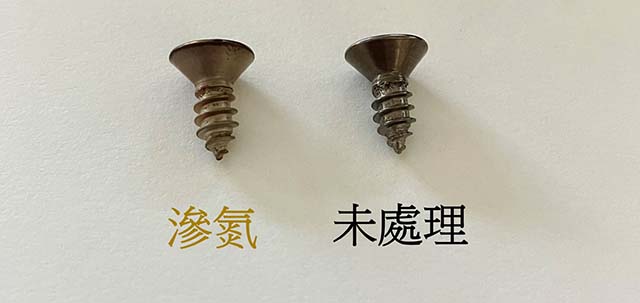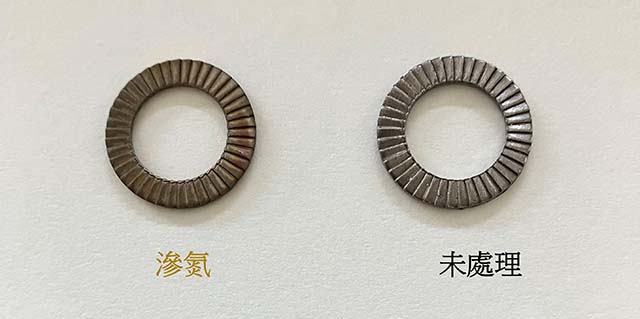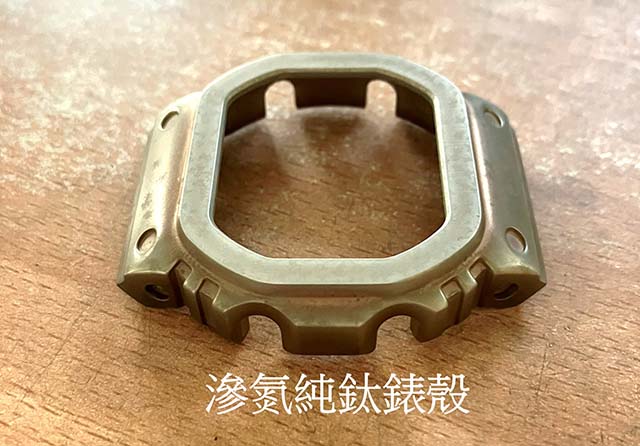純鈦與鈦合金其密度、耐蝕性與比強度較一般鋼鐵或是不銹鋼優異,經常廣泛地使用在航太、醫療、高爾夫球頭以及汽車產業。即使鈦的比強度較鋼鐵產品好,其硬度卻遠不及可經由熱處理硬化的鋼鐵產品。

純鈦硬度約為HV150-270之間,常使用在耐高度機械性能的產品之64Ti(Ti-6Al-4V)也僅高達HRC35左右。 因此,純鈦與鈦合金表面經常因不耐磨損而產生刮痕。有鑑於此,將純鈦與鈦合金做表面硬化成為擴大其應用的顯著課題。氮化處理則是環保且具有優勢的硬化方式,特別是離子氮化處理方式。

鈦經過離子滲氮處理後,其表面硬度約為原本純鈦硬度的2-3倍(由HV180提升至HV500-600),其擴散層的梯度較緩,使得其氮化層與基底結合力佳,不易剝離,如圖1所示。 如剩下的圖所示,其純鈦經過氮化處理後,表面呈現氮化鈦的金色光澤。

純鈦本身的耐蝕性較一般鈦合金佳,經過氮化處理後,表面氮化鈦又可以增進耐蝕性,此表面處理可應用至嚴苛腐蝕環境下的工件,例如燃料電池。
Plasma nitriding treatment of Ti and Ti alloy:
The characteristic of Ti and Ti alloy such as low density, high corrosion resistance, and high specific strength is attractive in comparison to steel products, so that Ti and Ti alloy are extensively applied in aerospace, medical, golf, and automotive industries. However, the wear resistance is inferior than the steel products hardened by regular heat treatment due to the low hardness. The hardness of Grade1-4 Ti alloy is just 150-270HV, and the one of Grade 5 (Ti-6Al-4V) is up to 35 HRC. In order to improve the inferiority, the surface hardening treatment for Ti alloy is a significant issue. Nitriding treatment for Ti alloy is conventional surface hardening treatment and requires high energy efficiency, especially for plasma nitriding. After plasma nitriding treatment, surface hardness of TA2 Ti is elevated from HV 180 to HV 550-700. The diffusion layer requires low hardness gradient, provides good ductility and adhesion between layer and base. It is shown in Fig.1. The appearance of nitrided Ti workpiece shows golden tincture in rest of figures. In addition, nitriding surface of Ti can enhance the corrosion resistance and be applied in tough environment such as fuel cell.
